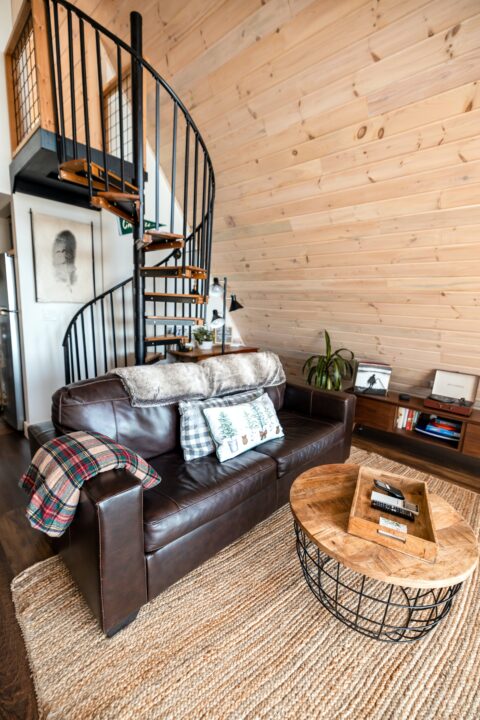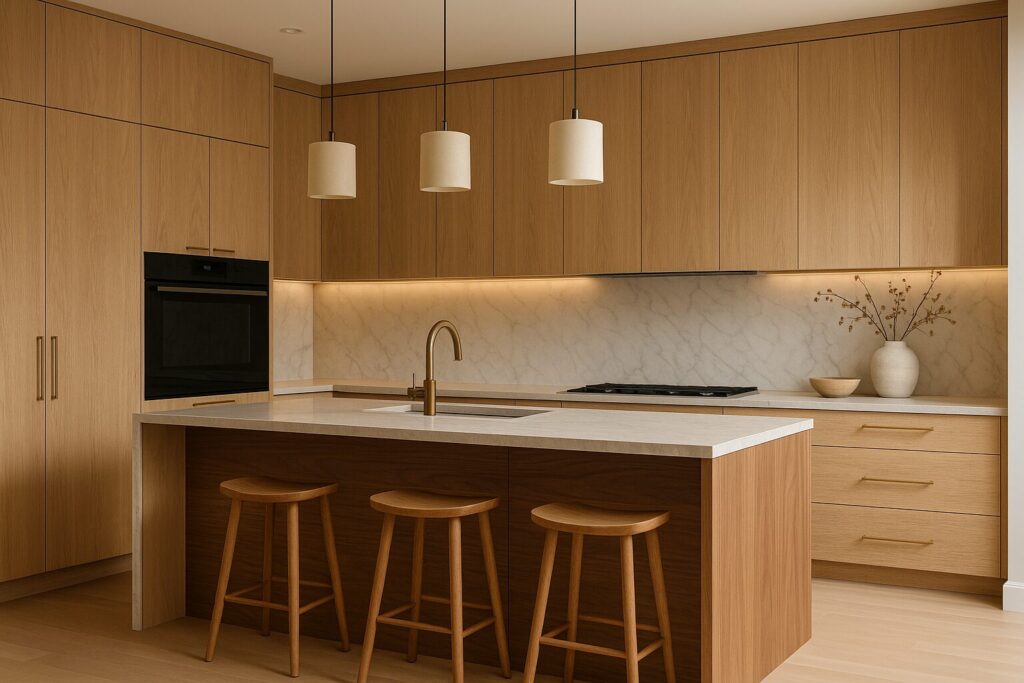Have you ever wondered how some spaces, i.e. rooms, offices, etc look so exquisite? The walls were not just painted; there is something on them that gives them that distinguished look and creates an entire atmosphere in that space. Engineered wood paneling is what makes that difference.
Engineered wood wall paneling is the use of engineered wood to decorate walls and create an acoustic ambiance. It helps to give your walls a more creative and artistic look.
Engineered wood wall paneling is lightweight and easier to maintain than solid wood wall paneling. You might be wondering what the difference between them is, they both are woods but they are not the same. As you read on, you will discover their differences.
What is Engineered Wood?
Engineered wood, also called man-made wood or composite wood, is a derivative of wood but is manufactured by binding or fixing strands, veneer, fibers, or boards of wood together with adhesives to form composite materials.
Engineered wood products are made with precise design specifications to meet international standards. These woods are then tested to provide uniformity so much that their structural performance is predictably the same anywhere in the world.
Types of Engineered Wood
There are different engineered woods, each made to serve one purpose or the other. They include the following;
- Cross-laminated timber
- Plywood
- Lumber
- Composite materials
- Parallel strand lumber
- Laminated veneer lumber
- Medium-density fibreboard
- Hardwood
- I-joists
- Composite lumber and so on
- High-density fibreboard
Types of Engineered Wood Used for Engineered Wood Wall Paneling
Of the previously listed types of engineered woods, some of them are used explicitly for engineered wood wall paneling. They include the following;
1. Cross-laminated timber (CLT)
-

cottonbro studio, pexels, 5089167.jpg
Cross-laminated timber is a strong engineered wood made from gluing together three or more layers of lumber arranged diagonally. CLT is originally from Europe, where it was developed in the 1990s.
2. Medium-density Fibreboard (MDF)
Medium-density fibreboard is a subcategory of engineered wood made from recycled wood particles and wood fibres obtained from the breakdown of either softwood or hardwood. These are then combined with synthetic resin and wax and formed into panels by the application of high temperature and pressure. MDF has a density that ranges from 600 to 800 kg/m³. It is the most common engineered wood used for engineered wood wall paneling.
3. High-density fibreboard (HDF)
High-density fibreboard is just like MDF but denser, stronger, and harder than MDF because it is made from highly compressed wood fibres. It has a density of 800-1040 kg/m³. It was first discovered in England in 1898.
4. Plywood
Plywood is an engineered wood made up of slim layers of wood veneers that are joined together and arranged at 90° to each other. Plywood originates from ancient Egypt but was improved by Samuel Bentham in 1797 through his application for patents covering several machines to produce veneers.
5. Oriented Strand Board (OSB)
-

fwstudio, pexels, 168442.jpg
Oriented strand board is an engineered wood primarily made by adding adhesives to layers of wood flakes and compressing them into precise shapes and forms. OSB was invented in 1963 by Armin Elmendorf in California
Types of Engineered Wood Wall Paneling
-

andrea davis, pexels, 2829026.jpg
Engineered wood wall paneling can be done in different styles and designs. These styles include the following;
1. Board and batten
This is created with the use of plywood. It is used primarily to decorate the lower part of walls rather than the whole surface of the walls.
2. Beadboard
This is an already-made panel that is achieved using MDFs and only requires you to glue them to the walls.
3. Flat panels
This is the combination of trimmed planks used to frame flat walls. It is mainly created with the use of high-quality plywood.
4. Shiplap wall paneling
Originally used for wall paneling of boats in the 19th century featuring notched panels but in recent times it was adopted into interior decoration featuring deep seams and notched panels. It is installed horizontally or vertically.
5. Tile board paneling
This is made to imitate porcelain tile in that a layer of melamine is added to MDF. It is only used to decorate the lower parts of the wall as it is difficult to install it on the whole wall. It is easier and faster to install when done on the lower parts of the walls.
6. Horizontal wall panels
This is the most non-complicated wall paneling as it only requires you to arrange the panels horizontally on the walls. It is mostly done on the exterior part of the walls and is made with hardwood.
Advantages of Engineered Wood Wall Paneling
Engineered wood wall paneling is an inexpensive and quick way to decorate your walls without too much labor. The advantages of engineered wood wall paneling are as follows:
1. Elegance and Style: Engineered wood wall paneling has a unique way of adding elegance to any setting. It gives your space life and style.
2. Appropriate Insulation: Warmth when it’s cold outside and cool atmosphere when it’s hot outside; that is one of the major reasons why engineered wood wall paneling was adopted. It provides adequate insulation that contrasts the weather outside.
3. Acoustics: Engineered wood wall paneling can dampen sounds from outside giving the house a good amount of soundproofing. Most people use engineered wood wall paneling in their movie theatres.
4. Covers Flaws: in ancient times, engineered wood wall paneling was used with the primary aim of covering up cracks, dents, wires, etc
5. Versatile Choice: Engineered wood wall paneling comes in different types and patterns that you can choose from to create any kind of look you want your space to take.
6. It’s Easy to Repair: Engineered wood wall paneling is much easier to repair than wallpapers because it doesn’t damage easily.
7. Eco-Friendly: Engineered wood wall paneling is eco-friendly because it reduces the felling of trees and makes use of recycled wood particles.
8. Aesthetic: Engineered wood wall paneling gives off an aesthetic feeling that modulates the mood of your space.
Disadvantages of Engineered Wood Wall Paneling
As everything is, anything that has an advantage has a disadvantage. As woods are, engineered woods are affected by moisture and even excess dryness. The disadvantages of engineered wood wall paneling include the following;
1. Wood Rot: It is susceptible to rotting if mismanaged. No matter how high the quality of the panels is, when exposed to excessive moisture continually, the rate of rotting increases.
2. Scratches and Dents: It is not free from scratches and dents. Scratches and dents can be caused by either humans, especially children, or animals, especially pets.
3. Wear and Tear: Every wood undergoes wear and tear, including an engineered wood paneling.
4. Looks Out of Date: Engineered wood wall paneling was used predominantly in the old times; therefore it can give your space a rustic look.
5. Release of Toxic Chemicals: If it is not processed properly, it may release toxic chemicals like formaldehyde gas, which is produced by the decomposition of the resin used in making the engineered woods.
Conclusion
Engineered wood wall paneling is aesthetically rewarding and can last as long as it can when not exposed to excessive moisture or sunlight. Sealing engineered wood wall paneling with good sealants can also aid in prolonging the lifespan of the engineered wood wall paneling. You can also change the look of your wood wall paneling by repainting it.






